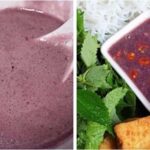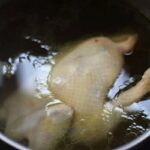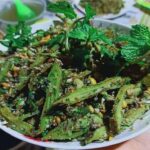The origins of Nem Ran, or fried spring rolls, can be traced back to the culinary masterpiece, ‘Chuyện cũ Hà Nội’ (Old Hanoi Stories) by renowned writer Tô Hoài, published in 1986. In his work, he mentions that the Saigon-style cha gio (fried spring rolls) made their way to Hanoi at an unknown time. However, it is believed that the dish was enhanced with a more sophisticated filling, including a combination of minced pork, beef, shredded chicken, or crab meat, along with wood ear mushrooms, bean vermicelli, and bean sprouts.
In Southern Vietnam, this dish is commonly known as “cha gio.” This is believed to be derived from the Southern dialect, where dishes that are pounded or ground are referred to as “chả.” The ‘Sách dạy nấu ăn trong gia đình’ (Family Cookbook), published in Saigon in 1920, mentions various types of “chả,” such as steamed pork sausage (cha lua), fish cakes (cha ca), crab cakes (cha cua), and corn sausage (cha bap).
The cha gio originated with pounded meat rather than minced meat. According to some sources, the Southern Vietnamese version of this dish is believed to have originated from a similar dish sold by the Hoa people in the Cholon area. The original recipe consisted of pounded pork mixed with corn and vegetables, wrapped in rice paper, and fried.
The ‘Ẩm thực tu tri’ (Monastic Cuisine) cookbook, published in Hanoi in 1930 by Tan Dan Thu Quan, includes a recipe for cha ran (fried patties), which are essentially the same as Saigon-style cha gio. The recipe calls for crab meat, minced pork, mushrooms, wood ear fungus, finely chopped onions, bean vermicelli soaked and cut into finger-length pieces, duck eggs, and fish sauce, all mixed together. The rice paper wrappers are dipped in water for about half a minute before being filled and rolled into cylindrical or square shapes. These are then fried until golden brown. The cha ran is typically served with a dipping sauce made from fish sauce, vinegar, garlic, chili, and fresh herbs such as lettuce, water spinach, morning glory, basil, and mint.
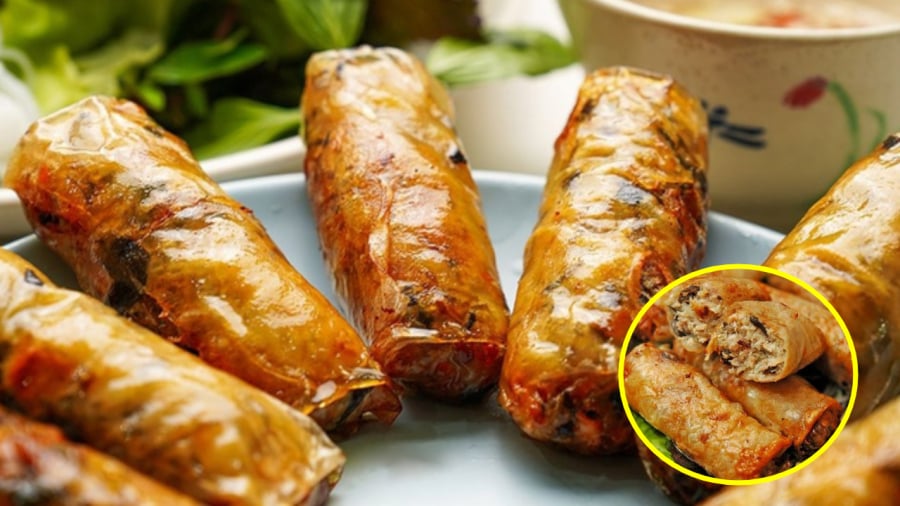
Nem Ran – A Longstanding Delicacy in Hanoi’s Culinary Landscape
The ‘Sách nấu thức ăn’ (Cookbook) by author Nguyen Van Niem, printed in Hanoi in 1932, provides instructions for making cha Sai Gon (Saigon-style cha gio made in Hanoi). The recipe calls for finely chopped pork, freshly peeled and minced river shrimp, crab meat, and preferably shredded chicken. It also includes chopped mushrooms, wood ear fungus, and onions for the filling. The bean vermicelli and fresh bamboo shoots are soaked and cut into thin strips, then blanched. If bamboo shoots are unavailable, bean sprouts can be used, but the ends must be trimmed. All the ingredients are then mixed with chicken or duck eggs, fish sauce, and pepper to taste. Care should be taken not to use too many eggs, as it will make the wrapping process difficult.
The rice paper wrappers are dampened with water and filled with the mixture before being fried in abundant oil until golden brown. The cha gio are typically served with a dipping sauce made from fish sauce, vinegar, garlic, chili, and fresh herbs such as lettuce and various mint leaves. Accompanying this delicious dish are a variety of fragrant herbs.
Today, some elderly individuals born in the 1920s and 1930s in Hanoi, Haiphong, and other regions still refer to nem ran as cha Sai Gon or cha ran.
Etymologically, the word “nem” is believed to be derived from the word “nêm,” which means “to season.” Over time, the pronunciation of “nêm” evolved into “nem.” The word “nêm” conveys the action of tightly packing or rolling something, such as closing a lid or fastening a bolt. In addition to nem ran, there are also dishes like nem chua (fermented pork rolls) and nem nam (meatballs) in Vietnamese cuisine.
The Saigon-style cha gio is also tightly rolled, similar to other types of nem, and the use of rice paper wrappers further contributed to it being commonly referred to as nem ran by the people.
According to various cookbooks and culinary guides published almost a century ago, the original filling for nem ran in Hanoi typically consisted of a combination of ingredients such as finely chopped pork, shelled and minced shrimp, crab meat, shredded chicken, mushrooms, wood ear fungus, onions, bean vermicelli, fresh bamboo shoots or bean sprouts, and chicken or duck eggs.
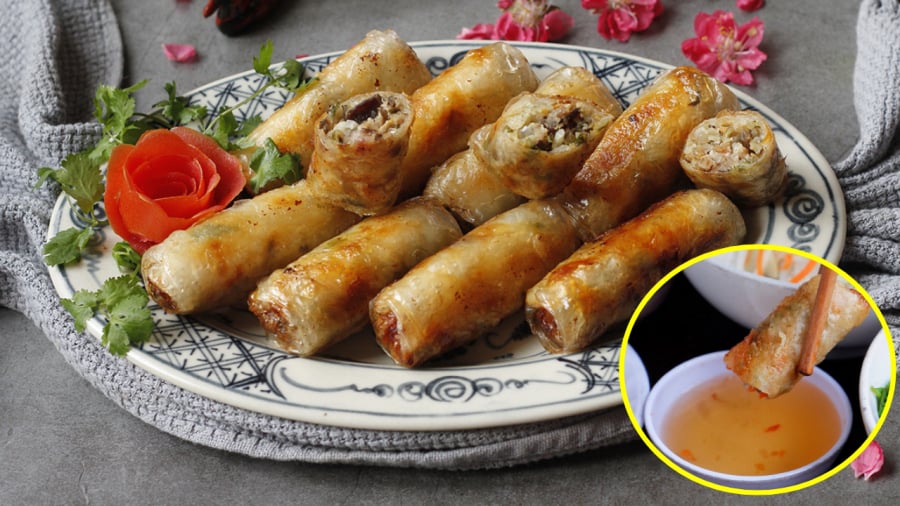
The Intricate Filling of Hanoi-Style Nem Ran from Nearly a Century Ago
The preparation of nem is quite elaborate and requires a variety of premium ingredients. Due to this and the fact that it was a challenging period, nem was typically reserved for special banquets and was not a common dish.
Over time, nem ran has evolved and become more accessible, often appearing on the menus of households and restaurants alike. Each region, locality, and family has put their unique twist on the filling, depending on individual preferences. Regardless of the variations, nem ran remains a beloved and easily enjoyable dish, frequently gracing the reunion dinners of families during the Lunar New Year celebrations.
The Elusive Ca Mau Specialty Fish: A Seasonal Delicacy that Has Women in a Flurry to Avoid Missing Out.
In Ca Mau, the spawning season for knifefish typically occurs from around March to June. The exact timing can vary depending on weather conditions and the environment. This period marks a bustling time for the local fishing industry, as these fish are a prized catch for their delicious taste and high nutritional value. The unique reproductive cycle of knifefish, influenced by the region’s climate and habitat, contributes to the vibrant fisheries and culinary culture of Ca Mau.


























